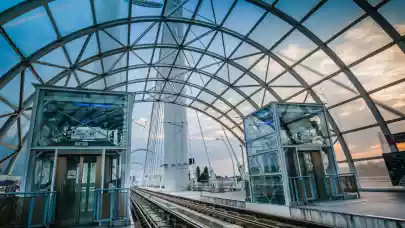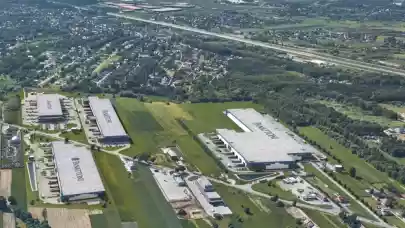
2017 was a year of dynamic growth on Romania’s real estate market and the stage is set for 2018 to bring just as strong results. Silviu Pop, Head of Research at Colliers International Romania put together 10 predictions for the Romanian market in 2018.
1. Romanian economy to slow down, but outperform most EU countries
After 2017’s stellar GDP expansion of over 7%, Romania was the fastest growing country in the European Union. It was mostly a private consumption story, though exports held up quite well amid an unexpected robust Eurozone economy. In 2018, given the limited room for fresh fiscal stimulus and expected monetary policy tightening, GDP growth is set to slow down to a more sustainable level (around 5%), still keeping Romania among the top performing European economies. Consequently, the outlook for office, retail and industrial spaces remains quite rosy, especially for the latter. Our opinion does not take into account “black swan”-type risks like a sharp deterioration of the internal political climate or severe deepening of Western-Eastern EU divide.
2. Investment scene to steal the show
After 2017’s investment volumes of just over EUR 0.9bn, the potential pipeline for the office segment alone could be larger than this level. Though some deals could be delayed for next year (as we have seen in 2017 as well), we expect to see overall market turnover move well north of EUR 1bn, with both currently active players and new entrants to drive up demand. Among the arguments supporting the real estate investment scene are: attractive yield spreads versus neighbouring CEE peers, good macro performance and strong appetite from banks to back deals (other funding alternatives also available).
3. Migration (internal and external) becoming ever more relevant
Internal migration patterns are already suggesting a growing preference for Romania’s major “magnet cities” – Cluj-Napoca, Timisoara and Iasi – at the expense of Bucharest, with surveys further supporting this. With both labour and living costs lower outside the capital, companies might seek to rather expand/establish offices outside Bucharest; such patterns would also boost other segments (especially retail). A key development we will be watching out for is if Romanians working in other countries are starting to return home in larger numbers.
4. Industrial segment to continue delivering very strong results
Despite 2017’s record deliveries of storage spaces (around half a million sqm), the vacancy rate remained at an all-time low of close to 5% nationwide and 2% near Bucharest. We view the strong tenant demand as fundamentally sound given the boost in e-commerce and room to catch up CEE peers. Vacancy could climb a bit amid potentially higher speculative developments and some larger tenants moving in self-developed facilities. Meanwhile, big landbanks ensure that deliveries could continue to be elevated in 2018 (similar to 2017’s pace, if not higher).
5. Infrastructure constraints to remain in place
After 2017 saw the delivery of 24km of highways nationwide, nearly four times below the year-start estimate from the government, pundits are warning 2018 could be similar. For this year, the minister is promising at least 156 km. Given the limited fiscal room in the state budget and poor track record of EU funds absorption, we do not expect to see a material acceleration in infrastructure developments. That said, any positive surprises could bring a flurry of deals/interest.
6. Bucharest office market to focus on new hotspots
Deliveries look set to accelerate quite a bit in 2018 after disappointing in 2017. Amid an expected slight slowdown in terms of employment growth, vacancy is likely to move slightly higher. The new hotspots (Center West, Piata Presei/Expozitiei) can likely be digested organically to a large extent, though developers are becoming much more cautious, with the pipeline for 2018 already one third lower than we would have thought 2-3 quarters ago.
7. Labour market becoming quite stretched
The rate of unfilled job openings has been hovering around post-crisis highs, while unemployment has stabilized near record lows. Furthermore, central bank data suggest that the supply-demand mismatch on the labour market has been on the rise, while new bachelor graduates with a technical background are proving too few in comparison with employers’ requirements. This extremely competitive labour market could limit the companies’ abilities to expand both in Bucharest and in other parts of the country (thereby limiting office market activity – leasing and new deliveries), though a potential buffer could come from external migrants returning to their native country.
8. Balanced Bucharest retail scene, ample room for smaller schemes nationwide
No new large projects have been announced for Bucharest in the upcoming years, just some extensions. That said, the consumption-driven growth has improved household spending appetite throughout the country, so investments will continue to focus on improving the nationwide coverage of modern retail, including via medium to smaller schemes in the less populated cities (below 100,000-150,000 inhabitants). Otherwise, the retail market remains highly competitive, as the very low vacancy suggests (in single digits for big shopping centres).
9. Online retail, still no immediate threat for brick and mortar schemes
Shopping centres are still set to deliver solid results for tenants as Romanians have a higher predisposition that regional peers to actually look at a certain product before purchasing it. Still, in order to improve footfall, malls will need to cement their status as actual destinations to spend one’s free time. This means more space for the food court and other services like cinemas or children’s playgrounds (so entertainment spaces of at least 20% of total GLA). A smaller per capita retail stock than in neighbouring CEE countries could also act as a buffer for brick and mortar schemes versus online sales. All in all, a “retail apocalypse” looks like a minimal risk for Romania.
10. Residential segment to remain the all-star driver for land demand
Given the higher wages and elevated intentions to purchase homes, residential projects are still likely to remain the key drivers for land, though at the time of writing, it is still too early to judge the impact of the start of a new monetary policy tightening cycle. As we have seen in the past, new office projects will likely draw demand for residential projects in neighbouring areas. Since 2018 is likely to see a large number of housing units hit the market, players might turn more cautious and new developments could deliver smaller projects, albeit in prime locations when possible.



